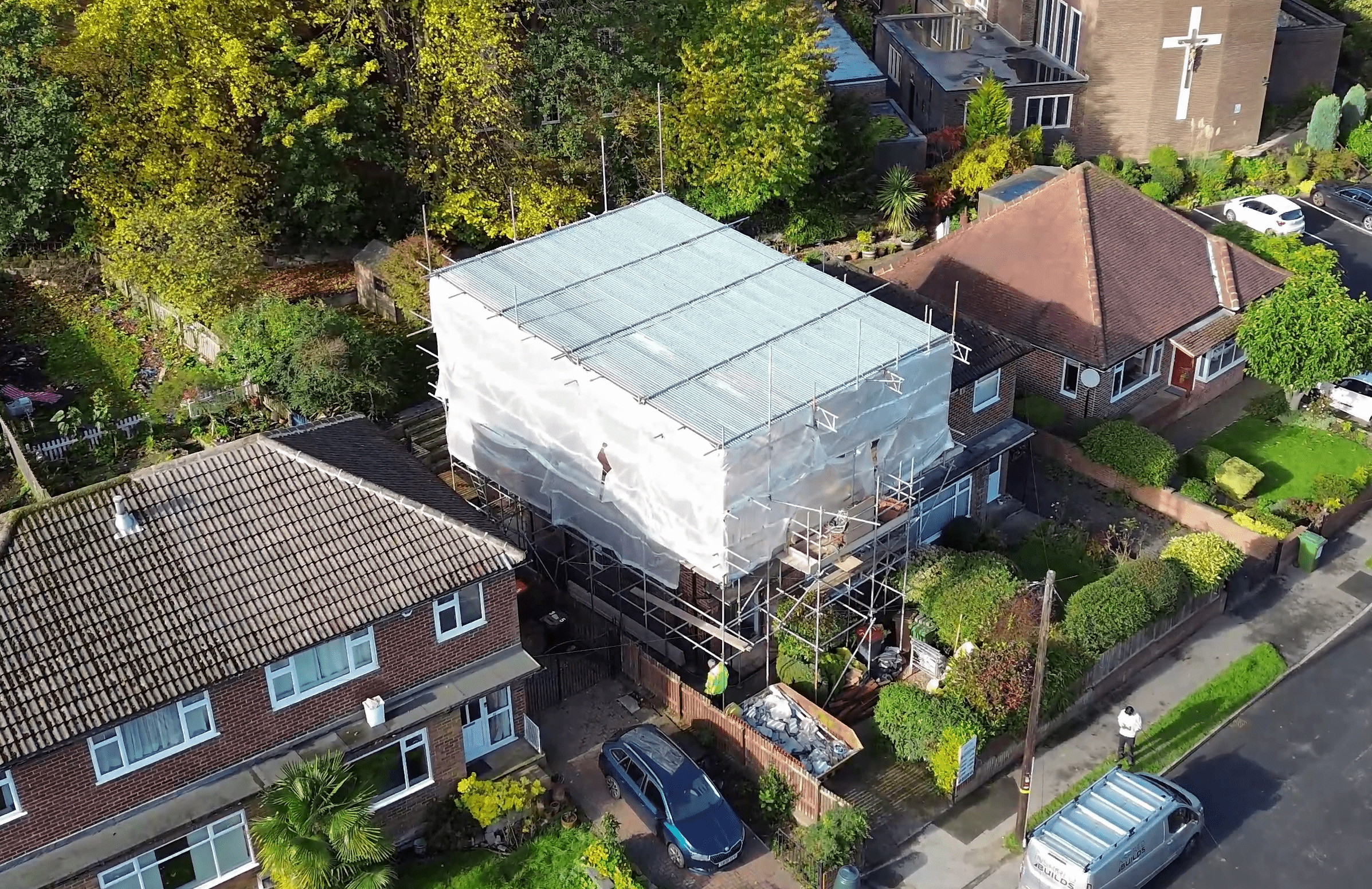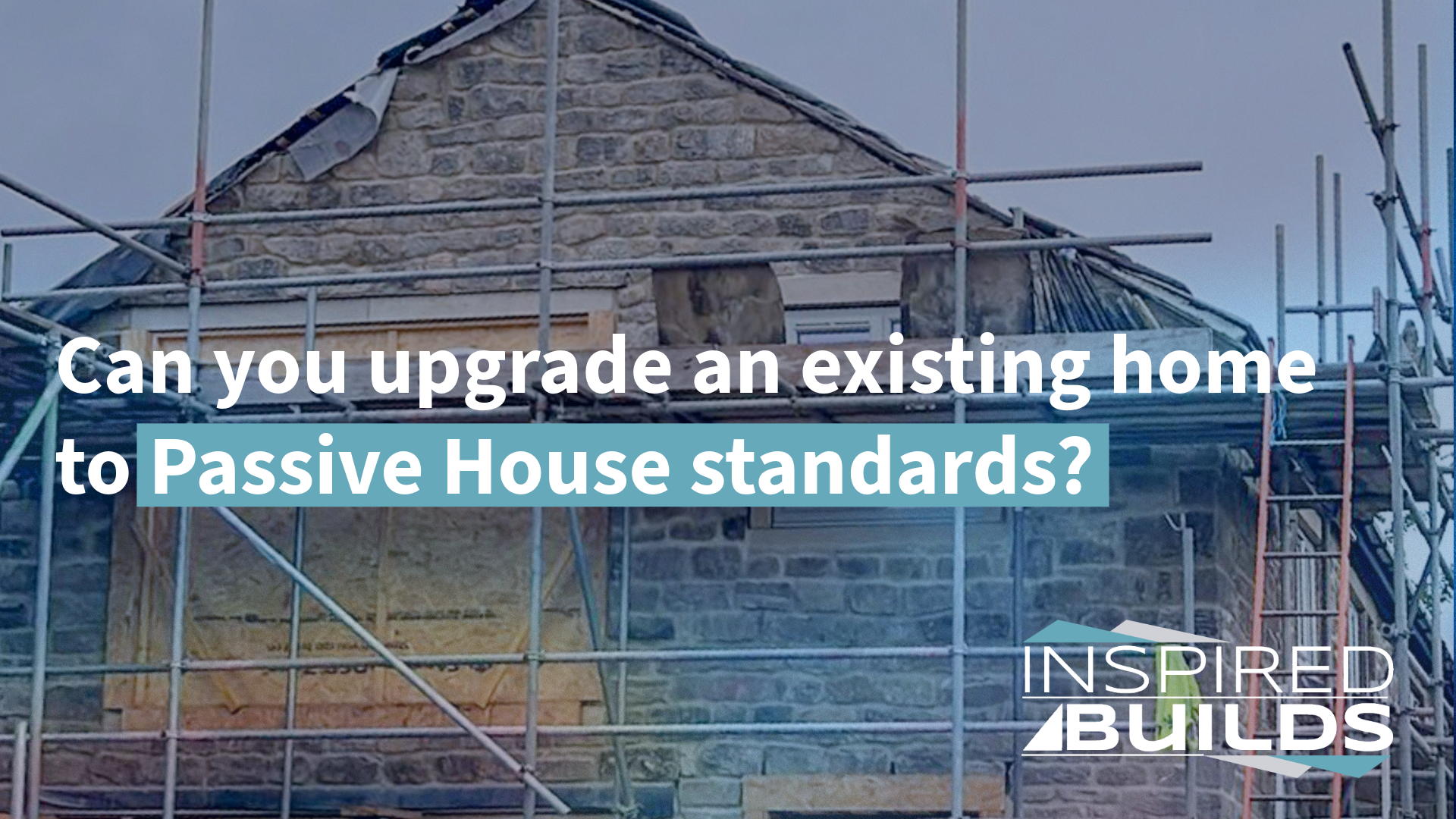People often ask if you can turn an existing house into a Passive House. Sometimes you can. Where the building makes that tricky, the Passive House Institute created EnerPHit, which is the retrofit route. It aims for the same outcome, very low energy use and consistent comfort, but it accepts that older homes come with quirks like heritage fabric, awkward junctions and limited service routes.
Below is a straight, practical view based on our recent work in Leeds and across Yorkshire.
EnerPHit vs Passive House, in plain terms
- Passive House suits new builds, where you can plan airtightness, thermal bridges and MVHR from day one.
- EnerPHit is for retrofits. The targets are a little more flexible, but the focus is the same: insulation first, airtightness and careful detailing, then ventilation and services.
How this shows up on our projects
- Bebington, Weetwood: a new build that achieved Passive House Plus. This is a textbook Passivhaus project - a new build home designed as Passivehaus from the outset, and built with that in mind.

- Ilkley stone cottage: a deep refurb that uses Passive House principles. New insulated slab with underfloor heating, ready for solar batteries and EV charging, and future heat pump. Not certified, but a big step up in comfort and running costs.

- Headingley whole-house renovation: full strip-out, new floor with underfloor heating, solar PV, loft dormers, side and rear extensions and an envelope upgrade with airtight details. This will be close to EnerPHit in spirit, but we are not certifying. There is no MVHR, and the client chose to put the certification budget into better fabric and detailing instead.

When EnerPHit certification is worth it
Consider certification if you want an independent measure of performance, if MVHR is in the brief and achievable, or if a certificate will help with valuation, funding or a future sale.
When a near-EnerPHit approach makes more sense
Skip the paperwork and put the spend into the building if MVHR is not realistic, if budget is tight, or if you want most of the benefits without the admin. We will always be honest about this. Many homes get 90 per cent of the gain from good fabric, proper airtightness and well installed windows and doors.
What a high-performance retrofit usually includes
- Insulation to walls, roof and floor, with thermal bridges reduced or removed
- A continuous airtight layer, protected by a service zone
- High performance windows and doors, with taped and primed reveals
- MVHR where viable, or a well designed extract and fresh air strategy if not
- Solar PV and heat pump readiness, or a full heat pump install where suitable
- A pre-plaster blower door test, fixes, then a final test, plus photo records of key junctions
This is the method we are using at Headingley, and used in parts at Ilkley. Fabric first, details second, technology third.
A quick way to decide
- Building new and aiming high? Passive House fits well. See Bebington.
- Renovating with clear routes for MVHR and a strong energy brief? EnerPHit can be a good target.
- Renovating with constraints or a tighter budget? Go near-EnerPHit and invest in the parts that give you the biggest return, like insulation, airtightness and proper glazing installation.
If you are planning a renovation and want to sense-check the best route for your home in Leeds or across Yorkshire, we are happy to talk through options, from full EnerPHit certification to a fabric-first plan that delivers comfort and low running costs.

.png)





